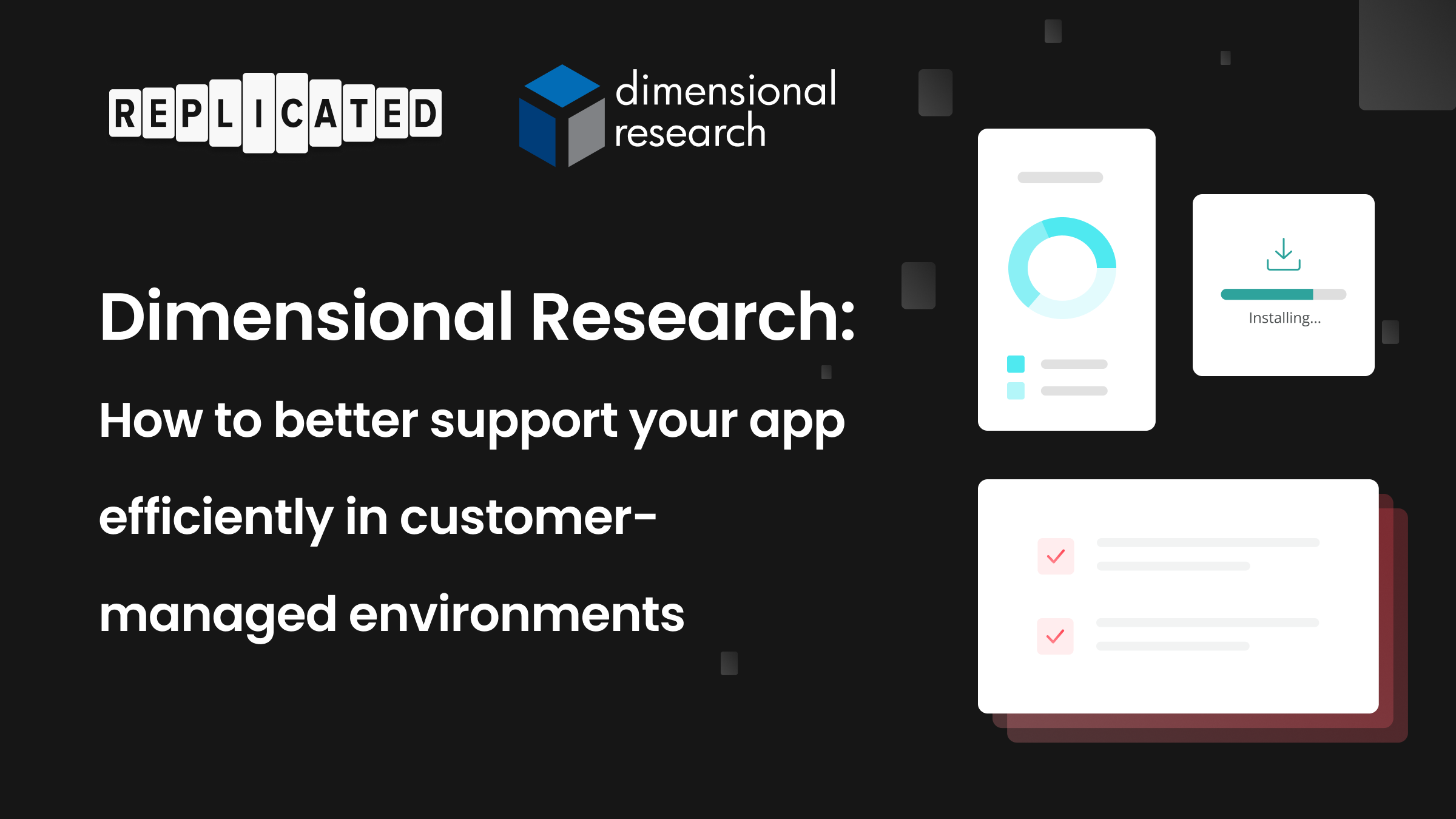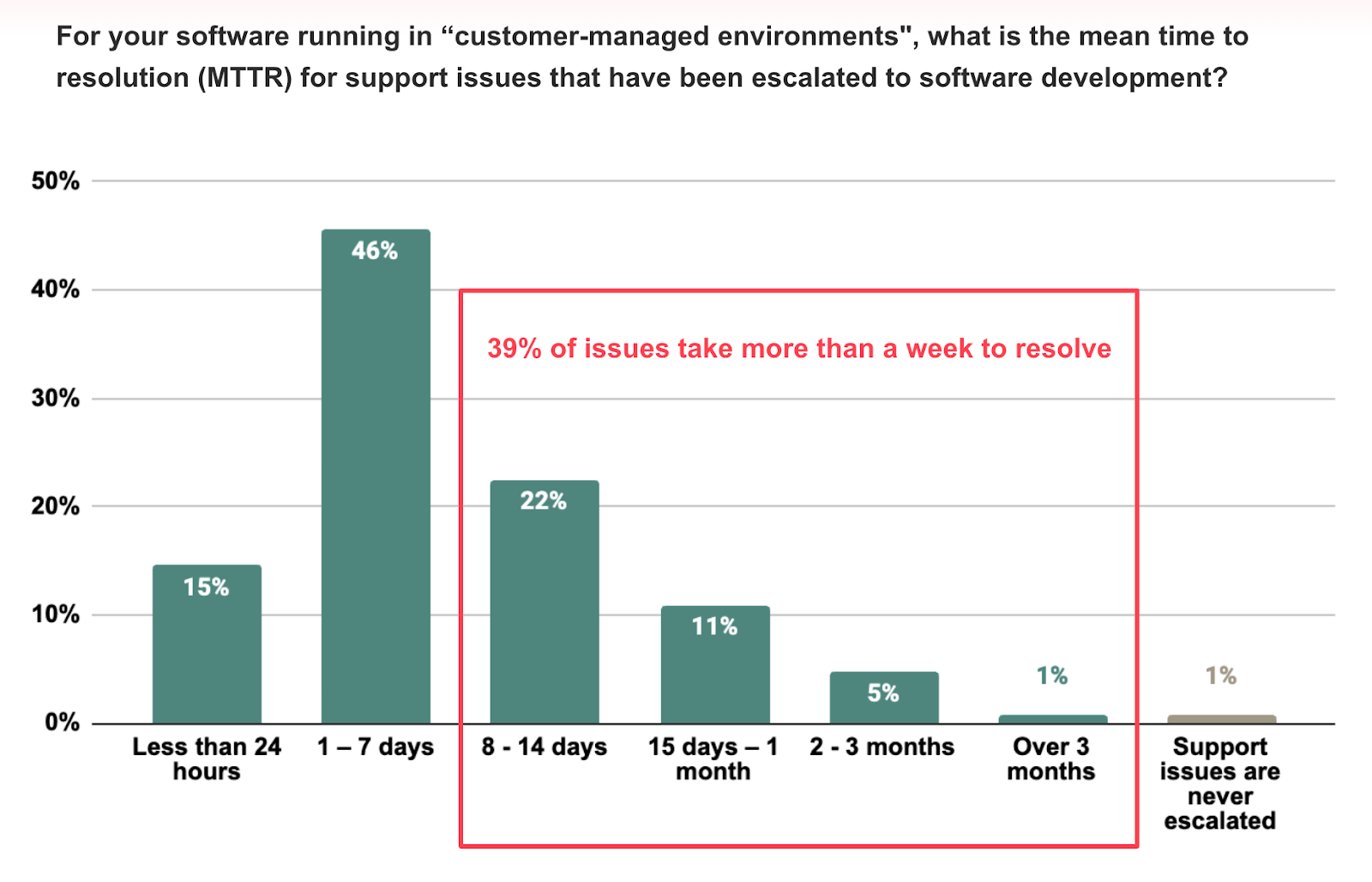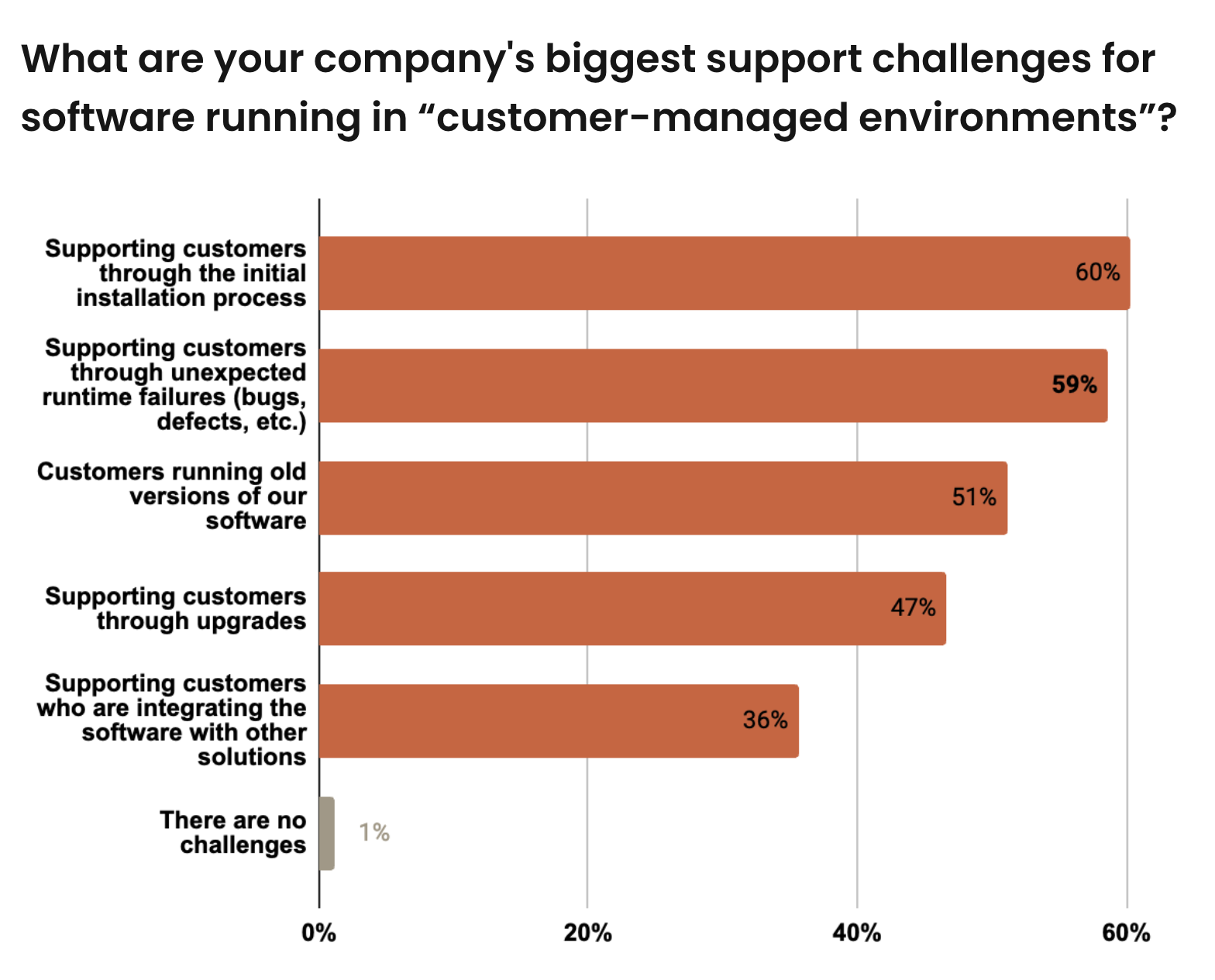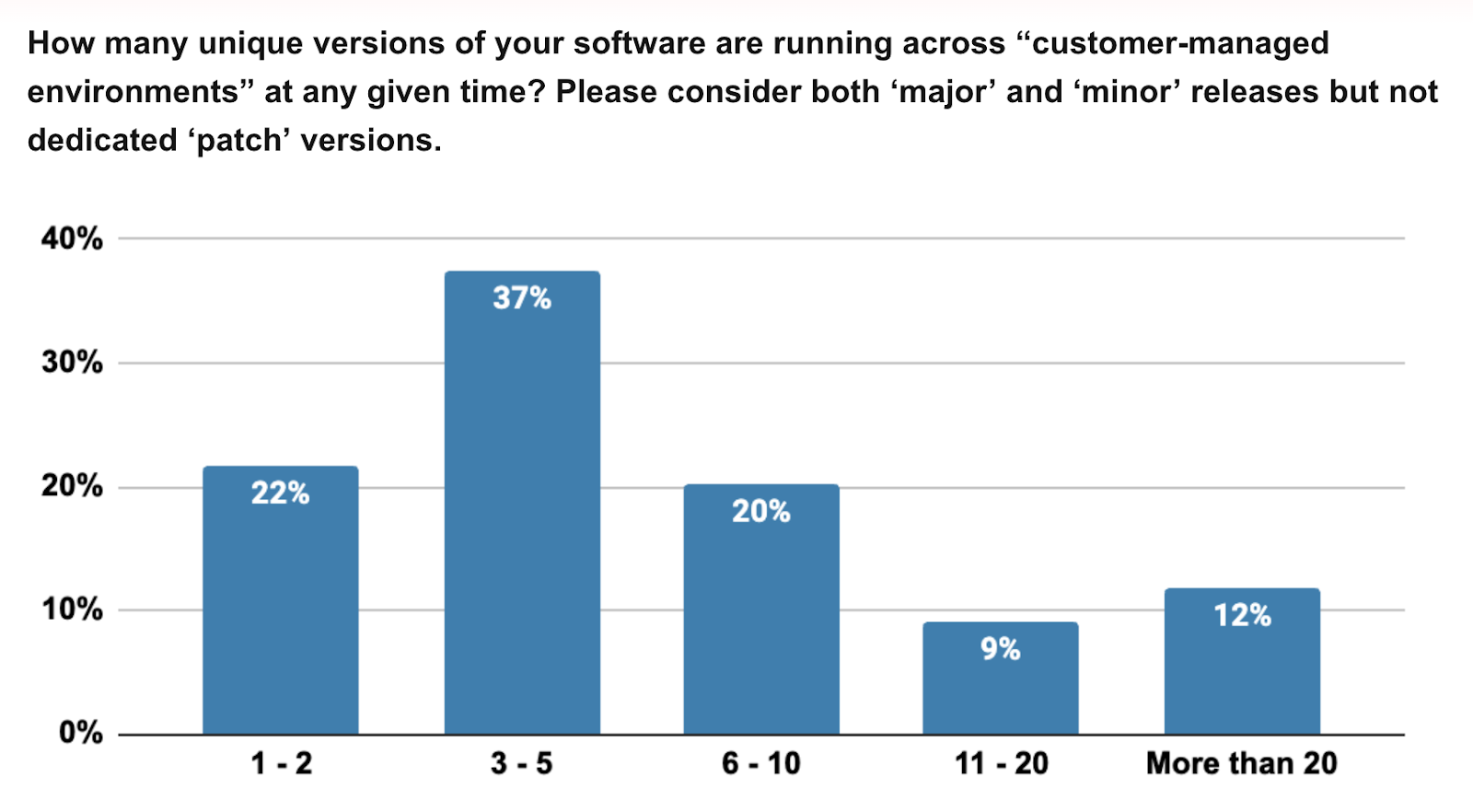
Previously we looked at issues around building software for customer-managed environments and the business opportunity success it represents. Now, let’s explore the issues with supporting that same software after it’s been deployed. Not surprisingly, research shows that vendors need to make improvements around support efficiency and keeping customers on more recent versions of their apps. Both these factors should contribute to better customer satisfaction (CSAT) and improved net promoter scores (NPS).
Background
Each year, replicated commissions an independent research firm to study the market for commercial software deployed into any customer-managed environment. We define customer-managed environments to include public cloud infrastructure-as-a-service (IaaS), public cloud platform-as-a-service (PaaS), private cloud, hybrid cloud, virtual private cloud (VPC), and on-premises data center – pretty much anything but a pure Software-as-a-Service (SaaS) offering.
View the full report here.
Support for customer-managed environments is often painful

Research findings: Only 15% of support issues for customer-managed environments are resolved in less than 24 hours. Almost 40% of support cases take more than a week to resolve. And 57% of ISVs report that these cases require help from developers at least once a week, often every day.
These results reflect a common challenge for ISVs who are delivering a product to be run by their customers: it can be really hard to diagnose and resolve issues in diverse environments. The impact can take multiple forms. Obviously, it’s not satisfying for customer issues to drag on, and they tend to get escalated after about a day, if not sooner for production-critical issues. Perhaps less obvious, but no less important, is the realization that the more often your core software developers are working on support cases the less time and focus they can have on innovation. We’ve talked before about why support efficiency matters and how replicated can help improve support outcomes. If you’re struggling with a longer mean-time-to-resolution (MTTR) and frequent escalations to engineering, it’s well worth reading more on those topics.
Understanding the challenges for support and customer success teams

Research findings: The top two issues are supporting customers through the initial installation process, and unexpected runtime failures (both cited by ~60% of software vendors.) Issues stemming from customers’ running older versions of software, problems with upgrades, and integrations round out the list.
Let’s set aside installation issues for now, as that will the topic of an entire blog in the near future. Why do customers encounter failures running, upgrading, or integrating software in their environments? We often hear from vendors that the reasons for these problems are varied, but usually include factors like a lack of release testing in customer-representative environments, a lack of expertise in troubleshooting Kubernetes, and difficulty getting complete environment, configuration, and log information to recreate issues. replicated can address each of these root causes, but perhaps more interesting is tackling why on-premises and self-managed apps aren’t being updated regularly….
The importance of keeping distributed apps up to date

Research findings: On-going support issues are driven by the fact that 90% of companies are supporting 3 or more versions of their software, exacerbated by the fact that only 22% of customers updated to the latest version in the first month it was released. Additionally, 49% of customer-managed environment software suffers from a feature lag of 3 weeks or more behind their comparable SaaS offering.
Ok, this might again be obvious, but if your customers are running old versions of your application, they are bound to run into problems, many of which you probably have fixed in newer releases. Older versions of software are also by definition NOT the latest and greatest experience and will be lacking new features and value. It’s particularly impactful on support efforts though. The more versions your support and customer success teams have to manage, the harder it will be, and the more often they’ll be escalating back to engineering again for help.
replicated can help you monitor your customers’ install success rates so you know where you stand and can measure your improvements against this key business metric and even provide up-to-the-minute telemetry and notifications. We can further help by pre-checking environments are suitable before installing or upgrading and enabling automatic updates alongside semantic versioning. These capabilities greatly reduce the administrative burden on your customers, and in turn greatly reduce the burden on your own teams of account executives, customer success, reliability engineers, support staff, and core developers. Everybody wins!
About This Study
Research goal: The primary research goal was to capture and document current trends for software installed in customer-managed environments (CME). The research sought to understand market demand, customer needs, support challenges, revenue growth, and future software development plans. POCs, installation challenges, upgrade habits, the impact on company personnel requirements to build and support CME solutions. investigated.
Methodology: Executives, business, and technology professionals at all seniority levels representing software companies of all sizes were invited to participate in a survey on their company’s customer-managed environment software development, delivery, and strategy. The survey was administered electronically, and participants were offered a token compensation for their participation.
Participants: A total of 695 qualified participants completed the survey. 505 participants were recruited by Dimensional Research while 190 were replicated customers. All participants had direct software responsibilities. Participants were from 5 continents representing a global view.